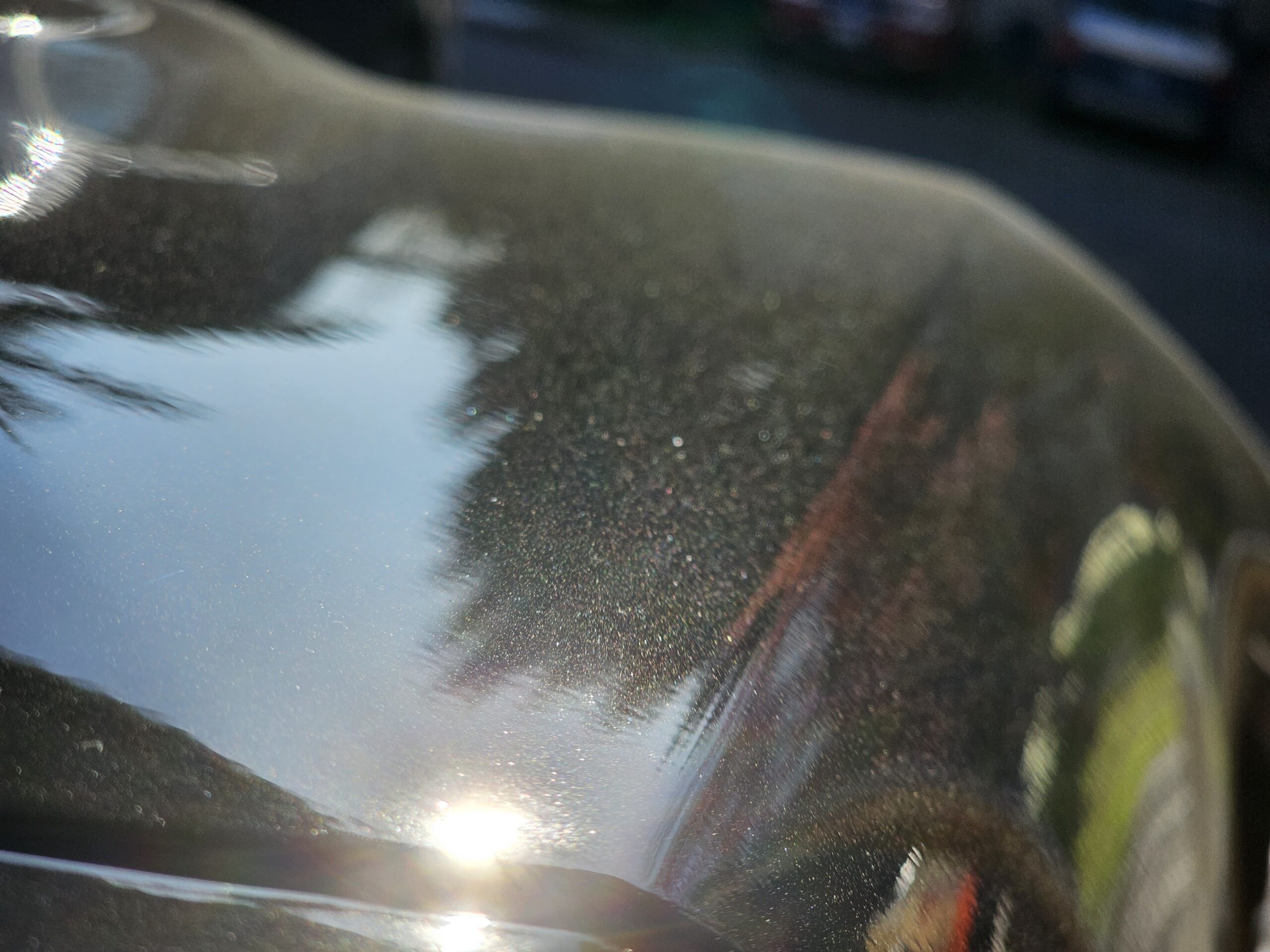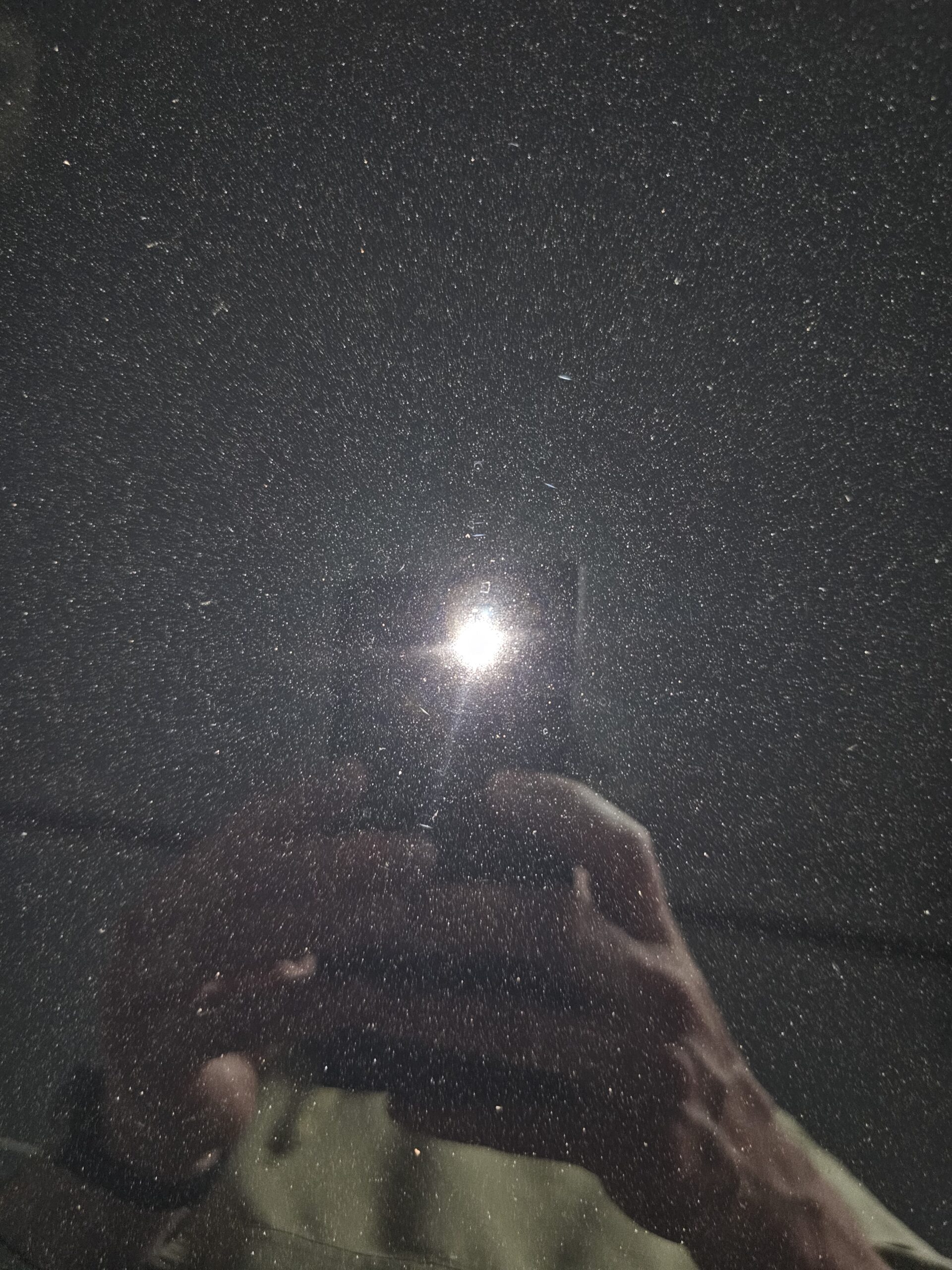
Pollen-covered vehicles are a common sight during peak pollen seasons, but did you know that these pesky particles can cause damage to your car’s paint and finish? In this blog post, we’ll explore the effects of pollen on vehicles and provide a comprehensive guide to safely remove pollen and protect your car’s exterior.

What is pollen?
Pollen is a fine, powdery substance, typically yellow, produced by plants for reproduction. It tends to accumulate on vehicles when airborne particles settle on surfaces, particularly during peak pollen seasons. Pollen can cause various types of damage, such as etching, scratching, and other blemishes to a vehicle’s paintwork and clear coat. To preserve your car’s appearance and value, it’s crucial to use safe methods to remove pollen.
Depending on your preferences there are different wash methods to safely remove pollen from your vehicle. Here we’ve listed the most common SAFE wash methods.

Two Bucket Wash
A two-bucket wash is a car washing method that involves using one bucket filled with soapy water for cleaning and another with clean water for rinsing, which helps prevent cross-contamination and reduces the risk of scratches and swirl marks on the vehicle’s paintwork.
Follow these tips to avoid marring the finish when pollen is present:
- Conduct a thorough pre-rinse.
- Use high-quality microfiber towels and washing supplies.
- Use a foam cannon for extra sudsy soap and added lubricity while washing.
- Use a drying aid, such as a ceramic sealant, for added lubricity, shine, and protection while drying.
Gary Dean Rinseless Wash
A rinseless wash is a car washing method that uses a specialized, high-lubricity solution to encapsulate and lift dirt from the vehicle’s surface, allowing for safe cleaning and minimal water usage without the need for a traditional rinsing process. The “Gary Dean Wash Method” is a rinseless car washing technique that involves using multiple clean microfiber towels, folding them into sections, and using a fresh section of the towel for each pass, ensuring that dirt is not reintroduced onto the vehicle’s surface, minimizing the risk of scratches and swirl marks.



Follow these steps to avoid damaging the paintwork when heavy pollen accumulation is present:
- Pre-rinse the vehicle. Yes, the makes it less of a rinseless wash; however, pre-rinsing the vehicle is generally quick and easy, and should only require a gallon or so of water if your vehicle isn’t too dirty.
- Be sure to use an adequate amount of properly diluted washing solution. The solution serves to encapsulate foreign contaminates and lubricates the surface to prevent marring during the cleaning process.
- Use high-quality microfiber towels. Specifically, high GSM towels with a fluffy nap. This will allow any pollen to become engulfed by the soft fibers of the material and lifted away from the paintwork as you clean.
- Follow the “Gary Dean Wash Method”
Waterless Wash
A waterless wash is a car cleaning method that utilizes a high-lubricity spray-on solution designed to encapsulate and lift dirt and grime from the vehicle’s surface, allowing for easy, relatively safe, and eco-friendly cleaning without the need for water or rinsing. This washing method is generally not recommended for paintwork known to be soft or prone to marring; however, if your vehicle’s paintwork is relatively “hard” and naturally scratch resistant (common on European luxury vehicles), or if a durable abrasion resistant ceramic coating is present, this method can be very safe if performed correctly.



Keep these precautions in mind when dealing with heavy pollen:
- Evaluate the condition of the vehicle. If it’s too dirty, pre-rinse the vehicle to remove abrasive particles.
- Lubricate the surface well with an ample amount of rinseless solution to encapsulate and dirt, dust, or pollen.
- Use a high-nap, high-gsm, high-quality microfiber towels that have also been saturated with your cleaning solution.
- Use zero pressure, very gently gliding the towel over the surface.
- Continuously roll the towel while wiping each section to avoid the formation of a leading edge with a concentrated accumulation of dirt and pollen, which could potentially mar the paintwork.
- Flip to a fresh, clean side of your towel often.
- Avoid working in direct sunlight if possible (hot paint is more fragile and susceptible to marring).


What NOT to Do: Tools to Avoid When Removing Pollen
To prevent potential damage to your vehicle’s paintwork and finish while removing pollen, it is crucial to avoid using certain tools and techniques:
- Dry wiping with a microfiber towel – Dry wiping the paintwork can cause scratches, as it does not provide adequate lubrication to lift and remove the pollen safely away from the surface.
- Using a California Duster or similar duster-type product – These dusters can drag pollen and other abrasive particles across the paintwork, leading to scratches and swirl marks.
- Using a car wash brush – Brushes, particularly those with stiff bristles, can cause micro-scratches and swirl marks on the paintwork as they are naturally abrasive and also do not effectively encapsulate and lift the pollen.
- Using a friction tunnel car wash – The brushes and other materials used in friction tunnel car washes are abrasive and cause scratches, swirl marks, and other damage to the paintwork and high gloss trim.
By avoiding these tools and techniques, you can safely remove pollen from your vehicle while minimizing the risk of damage to its paintwork and finish.
To keep pollen at bay, consider these strategies:
- Park in covered areas whenever possible and garage your vehicle when not in use.
- Avoid parking directly under or near tall trees, if possible.
- Opt for a ceramic coating instead of conventional wax to help repel dust and pollen.

Safely removing pollen from your vehicle is essential for preserving its appearance and preventing potential damage to the paint and finish. By following the outlined steps and choosing a wash method best suited for your needs, you can enjoy the benefits of maintaining a clean, well-protected vehicle. Don’t let pollen dull your car’s shine – follow our guide to keep your vehicle looking its best!
